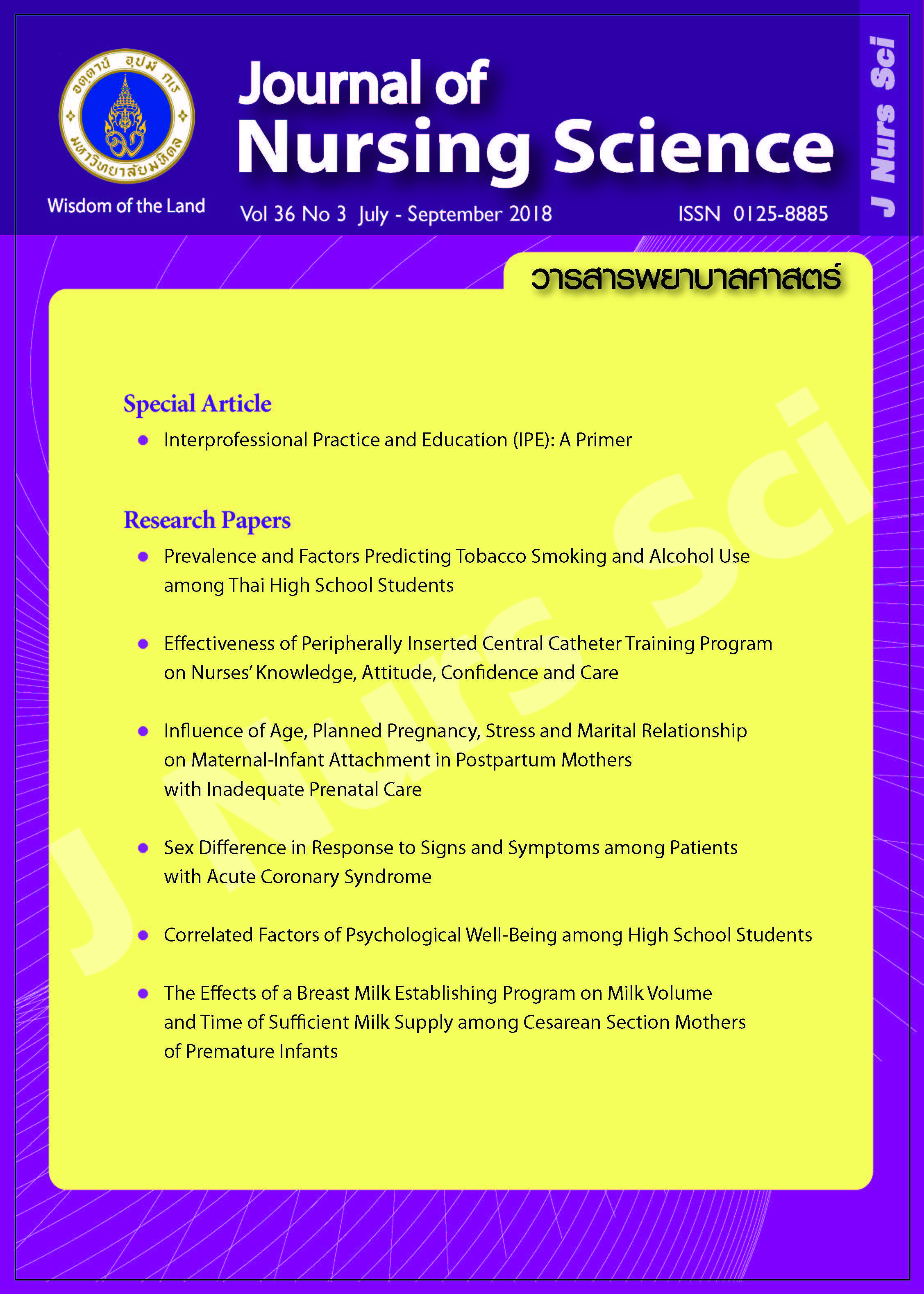Interprofessional Practice and Education (IPE) A Primer
Main Article Content
Abstract
Background
The knowledge and skills needed to provide high quality patient care in today’s world are increasing. This increase is partially due to the fact that health care itself is becoming more complex. There are many new health-related conditions and diseases and many others are becoming chronic, especially as populations around the world are aging. Identifying best practice and solutions for complex health problems is not always possible when one is working alone. Accordingly, the number of healthcare professionals needed to manage one patient is increasing. These healthcare teams need to be able to work together. For nursing faculty, it means that we not only need to prepare our students as nurses, but we also need to prepare them to be effective inter-professional team members.
Article Details
Copyright Notice: Nursing Science Journal of Thailand has exclusive rights to publish and distribute the manuscript and all contents therein. Without the journal’s permission, the dissemination of the manuscript in another journal or online, and the reproduction of the manuscript for non-educational purpose are prohibited.

Disclaimer: The opinion expressed and figures provided in this journal, NSJT, are the sole responsibility of the authors. The editorial board bears no responsibility in this regard.
References
http://www.who.int/hrh/resources/framework_action/en/
2. Siam Sport. Team communication board [image on the Internet]. Bangkok: Siam Sport Syndicate; 2018 [updated 2018 Jul 11; cited 2018 Aug 31]. [Figure], Joint task force operation ethics. Available from: http://www.siamsport.co.th/football/thaiotherleague/view/ 79718.
3. Interprofessional Education Collaborative Expert Panel. Core competencies for interprofessional collaborative practice: report of an expert panel. Washington, D.C.: Interprofessional Education Collaborative; 2011.

